So what does boar, fir and falcon say about Frejya?Let’s look first at the falcon. Freya’s falcon is probably the Gyrfalcon (JER-falcon), the largest falcon, who likes the northern climates. If she migrates at all, she is driven by scarcity of food, and she will sometimes winter at sea over ice. The Gyrfalcon is the preferred falcon for hunting. She mostly hunts birds, including other raptors, although she will also take small mammals. Other predatory birds leave her alone, as she is fierce. She has a varied hunting strategy and is considered very intelligent. The goddess Frejya has a cloak of falcon feathers reaching to the ground. With her characteristic generosity she loans this cloak to the other gods when they need it to move quickly. Falcons in general are associated with the sun or with death. Other important falcon deities include Circe, the witch who trapped Odysseus and changed his sailors into pigs, and Horus, the Egyptian sun god who avenged the death of his father Osiris and performed an important funerary rite for him.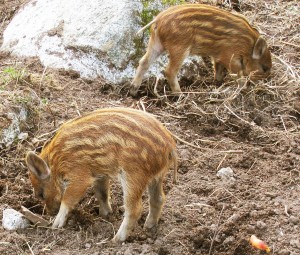
Category: Yule
Z is for Zuill
December 21, 2012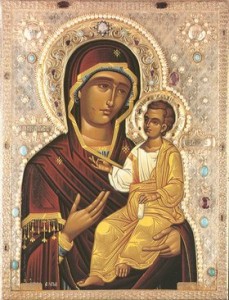 Zuill, pronounced “Yule,” is a Scottish name, probably meaning “born at Christmas.” It’s my Winter Solstice gift to all word game enthusiasts who need another “Z.”December 25th was the date on the Roman calendar corresponding to the winter solstice when the date of Christ’s birth was first marked. Although this mistake was eventually corrected (the mistake of the winter solstice, not the mistake of Christ’s birthday), it was not as gross an error as you might imagine. For many days near the winter solstice the nights are of equal length. In addition to the date of the Christ mass, some things that Christmas borrowed from the older Pagan holiday include the name “Yule,” the decorated tree, the spirit of merrymaking, the Yule log, holly, mistletoe, candles, the “twelve days,” gift giving, wreathes, feasting, and Santa Claus. Things shared between the Pagan holiday and the biblical account of Christ’s birth include the divine child, the virgin birth, gold, and incense. There have been later innovations associated with Christmas that can be traced neither to the Bible nor pre-Christian traditions, and a few of these include Christmas cards, the little drummer boy, and Black Friday.When I first heard the term “War on Christmas” several years ago my initial thought was, “Oh no, the Christians are trying to abolish Christmas again.” The original Christ mass only got started because Christian converts refused to abandon their winter solstice festivities, and the holiday has always had its detractors. During the Protestant Reformation criticism of Christmas reached a critical mass. The Puritans, especially, were determined to stamp out what they believed was a Pagan celebration, and much of the popular backlash against the Puritans stemmed from their unrelenting attack on Christmas. The Puritans established their utopian communities in New England partly with the aim of escaping Christmas.The “War on Christmas” is generally seen as a way of galvanizing conservative furor through a thinly veiled, paranoid attack on non-Christians. Certainly this “war” does fuel Christian intolerance. But I have a different take on the motivation and strategy behind the Christian Christmas antiwar propoganda. It relates to the uneasy alliance between fundamentalist Christians and big business in the conservative political movement. On the part of big business, the uneasiness lies partly with Christian persecution of gays and rigid enforcement of stereotypic gender roles, both of which interfere with marketing efforts across demographics. Christian morality applied to popular culture has even moved the entertainment industry politically in line with liberals. But it is the anti-capitalist sentiment within very conservative Christianity that is the source of the greatest tension.There is always been an anti-capitalist element within Christianity consistent with Christianity’s anti-materialist roots. To the most devout conservative Christians, Christmas represents materialism and popular culture wrapped up in one Pagan package. There are many groups which believe the celebration of Christmas is anti-Christian, including the Jehovah’s Witnesses, the Church Of God, and a long list of Pentecostal churches. Within other churches, such as the Seventh-day Adventists, the Church of Christ, and many smaller Baptist churches, there is a sizable minority who vocally oppose the observation of Christmas. Even those conservative Christians who celebrate Christmas bemoan what they term the “commercialization” of the holiday.As fundamentalist Christianity has gained strength and traction, there has been the possibility of a stronger grassroots movement against Christmas taking hold, particularly as Pagans, who own the holiday much more than Christians, have risen in visibility if not in absolute numbers. Enter the ingenious strategy of Fox News and The American Family Association, a Christian political organization that allies in itself with big business concerns in a number of ways, such as by being pro-fossil fuel and anti-union. By framing opposition to Christmas as an attack by “liberals” (read atheists and Jews), the celebration of Christmas becomes a defense of Christianity. Christian animosity toward business (big and small) can be channeled into opposition to the word “holiday” in advertising. The message is that commercial interests at Christmas are okay as long as they specify that they are in support of beleaguered Christians.Many people look askance at the attempts to galvanize conservative Christians into defending a holiday that, if anything, is in danger of taking over the world, or at least the calendar. This is actually an attempt by right wing media, which is owned by big business, to manage the base and keep the Christian/capitalist alliance in place.SourcesBabyNames.comKealthley, J. Hampton III. Should Christians Celebrate Christmas? Bible.org.Popper, Nathaniel. Boycotts Bloom as Religious Conservatives Wage Battle Over Christmas. Jewish Daily Forward, 2005.
Zuill, pronounced “Yule,” is a Scottish name, probably meaning “born at Christmas.” It’s my Winter Solstice gift to all word game enthusiasts who need another “Z.”December 25th was the date on the Roman calendar corresponding to the winter solstice when the date of Christ’s birth was first marked. Although this mistake was eventually corrected (the mistake of the winter solstice, not the mistake of Christ’s birthday), it was not as gross an error as you might imagine. For many days near the winter solstice the nights are of equal length. In addition to the date of the Christ mass, some things that Christmas borrowed from the older Pagan holiday include the name “Yule,” the decorated tree, the spirit of merrymaking, the Yule log, holly, mistletoe, candles, the “twelve days,” gift giving, wreathes, feasting, and Santa Claus. Things shared between the Pagan holiday and the biblical account of Christ’s birth include the divine child, the virgin birth, gold, and incense. There have been later innovations associated with Christmas that can be traced neither to the Bible nor pre-Christian traditions, and a few of these include Christmas cards, the little drummer boy, and Black Friday.When I first heard the term “War on Christmas” several years ago my initial thought was, “Oh no, the Christians are trying to abolish Christmas again.” The original Christ mass only got started because Christian converts refused to abandon their winter solstice festivities, and the holiday has always had its detractors. During the Protestant Reformation criticism of Christmas reached a critical mass. The Puritans, especially, were determined to stamp out what they believed was a Pagan celebration, and much of the popular backlash against the Puritans stemmed from their unrelenting attack on Christmas. The Puritans established their utopian communities in New England partly with the aim of escaping Christmas.The “War on Christmas” is generally seen as a way of galvanizing conservative furor through a thinly veiled, paranoid attack on non-Christians. Certainly this “war” does fuel Christian intolerance. But I have a different take on the motivation and strategy behind the Christian Christmas antiwar propoganda. It relates to the uneasy alliance between fundamentalist Christians and big business in the conservative political movement. On the part of big business, the uneasiness lies partly with Christian persecution of gays and rigid enforcement of stereotypic gender roles, both of which interfere with marketing efforts across demographics. Christian morality applied to popular culture has even moved the entertainment industry politically in line with liberals. But it is the anti-capitalist sentiment within very conservative Christianity that is the source of the greatest tension.There is always been an anti-capitalist element within Christianity consistent with Christianity’s anti-materialist roots. To the most devout conservative Christians, Christmas represents materialism and popular culture wrapped up in one Pagan package. There are many groups which believe the celebration of Christmas is anti-Christian, including the Jehovah’s Witnesses, the Church Of God, and a long list of Pentecostal churches. Within other churches, such as the Seventh-day Adventists, the Church of Christ, and many smaller Baptist churches, there is a sizable minority who vocally oppose the observation of Christmas. Even those conservative Christians who celebrate Christmas bemoan what they term the “commercialization” of the holiday.As fundamentalist Christianity has gained strength and traction, there has been the possibility of a stronger grassroots movement against Christmas taking hold, particularly as Pagans, who own the holiday much more than Christians, have risen in visibility if not in absolute numbers. Enter the ingenious strategy of Fox News and The American Family Association, a Christian political organization that allies in itself with big business concerns in a number of ways, such as by being pro-fossil fuel and anti-union. By framing opposition to Christmas as an attack by “liberals” (read atheists and Jews), the celebration of Christmas becomes a defense of Christianity. Christian animosity toward business (big and small) can be channeled into opposition to the word “holiday” in advertising. The message is that commercial interests at Christmas are okay as long as they specify that they are in support of beleaguered Christians.Many people look askance at the attempts to galvanize conservative Christians into defending a holiday that, if anything, is in danger of taking over the world, or at least the calendar. This is actually an attempt by right wing media, which is owned by big business, to manage the base and keep the Christian/capitalist alliance in place.SourcesBabyNames.comKealthley, J. Hampton III. Should Christians Celebrate Christmas? Bible.org.Popper, Nathaniel. Boycotts Bloom as Religious Conservatives Wage Battle Over Christmas. Jewish Daily Forward, 2005.
The Y-Junction
December 14, 2012 The goddess Hecate is often referred to as “Goddess of the Three-Formed Crossroads,” a title which strengthens my belief that she was originally a goddess of the waterways. By “three-formed” the title refers to a junction of three roads meeting in a “Y.” In Greece a statue of the goddess was sometimes placed at such a crossroad, her three faces pointing in three directions. Offerings of food would be placed there, particularly by those embarking on a journey.
The goddess Hecate is often referred to as “Goddess of the Three-Formed Crossroads,” a title which strengthens my belief that she was originally a goddess of the waterways. By “three-formed” the title refers to a junction of three roads meeting in a “Y.” In Greece a statue of the goddess was sometimes placed at such a crossroad, her three faces pointing in three directions. Offerings of food would be placed there, particularly by those embarking on a journey.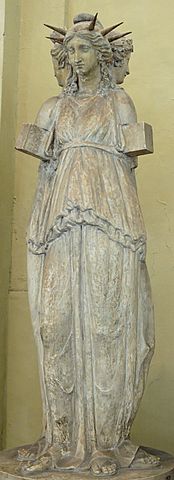
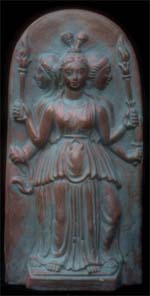
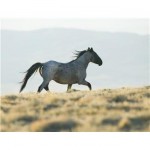
Talk by Z Budapest about Winter Solstice holidays
December 9, 2012A Yule Gift I Knew You Wouldn’t Have
December 7, 2012This Winter Solstice I thought I’d get you something more original than a partridge in a pear tree. This is a bird-of-paradise (Manucodia comrii) from New Guinea, singing a song you’ve probably only heard on a space music soundtrack. The clip is from Cornell University’s ornithology website.
The Yule Fire
November 30, 2012 In early December, the equivalent in Pagan households to “Where did we store the Christmas lights?” is “What did we do with the Yule log?” A piece of wood from last year’s Winter Solstice ritual fire is always saved to burn on the next year’s fire. This is a throwback to times when a perpetual fire was burned at the community shrine or temple, and it symbolizes the continuity of tradition.It is the fire and not the log that is the central theme of the Yule ceremony. The hearth fire is the manifestation of the ancestral spirits and the generating force of new human life. According to Clement A. Miles in Christmas Customs and Traditions: “Ancestral spirits, it seems, were once believed to be immanent in the fire that burned on the hearth, and had to be propitiated with libations, while elsewhere the souls of the dead were thought to return to their old homes at the New Year, and meat and drink had to be set out for them.” This sounds a lot like the holy day of Samhain that just passed on October 31st. Euro-Pagan religions which preceded Christianity are essentially systems of ancestor worship, so we would expect the ancestors to play a role in holy days throughout the year. Also keep in mind that Celtic and Germanic cultures absorbed much of the religion already practiced in the regions they settled, and thus there is duplication.In Neolithic European cultures, the hearth was the center of worship, so much so that many objects found in the vicinity of the hearth during excavations are assumed to have religious importance. Greek and Roman writings also identify the hearth as the focus of the family’s spiritual life, and indeed the Latin word for “hearth” is “focus.” Olivia Robertson, co-founder of The Fellowship of Isis, has written “The religion of the Goddess centres around the Hearth. Whether this be the inner sun flaming within the matrix of our earth, or the sun itself, this is the source of manifested life.”Although I frequently reference my symbol encylopedia, interestingly enough I had never until today looked up the entry for “hearth.” The description is short, so I will quote it in full:
In early December, the equivalent in Pagan households to “Where did we store the Christmas lights?” is “What did we do with the Yule log?” A piece of wood from last year’s Winter Solstice ritual fire is always saved to burn on the next year’s fire. This is a throwback to times when a perpetual fire was burned at the community shrine or temple, and it symbolizes the continuity of tradition.It is the fire and not the log that is the central theme of the Yule ceremony. The hearth fire is the manifestation of the ancestral spirits and the generating force of new human life. According to Clement A. Miles in Christmas Customs and Traditions: “Ancestral spirits, it seems, were once believed to be immanent in the fire that burned on the hearth, and had to be propitiated with libations, while elsewhere the souls of the dead were thought to return to their old homes at the New Year, and meat and drink had to be set out for them.” This sounds a lot like the holy day of Samhain that just passed on October 31st. Euro-Pagan religions which preceded Christianity are essentially systems of ancestor worship, so we would expect the ancestors to play a role in holy days throughout the year. Also keep in mind that Celtic and Germanic cultures absorbed much of the religion already practiced in the regions they settled, and thus there is duplication.In Neolithic European cultures, the hearth was the center of worship, so much so that many objects found in the vicinity of the hearth during excavations are assumed to have religious importance. Greek and Roman writings also identify the hearth as the focus of the family’s spiritual life, and indeed the Latin word for “hearth” is “focus.” Olivia Robertson, co-founder of The Fellowship of Isis, has written “The religion of the Goddess centres around the Hearth. Whether this be the inner sun flaming within the matrix of our earth, or the sun itself, this is the source of manifested life.”Although I frequently reference my symbol encylopedia, interestingly enough I had never until today looked up the entry for “hearth.” The description is short, so I will quote it in full:
An omphalos; the interior spiritual centre; the transference of the spirit by fire. The centre of the home; feminine domination; fire in its feminine-earth aspect, but the fire can also take on the masculine aspect with the earth as the feminine; warmth; provision of food. The Vedic round hearth is the earth, the realm of man, while the fire to the East is the realm of the gods. Among South American Indians the hearth-stone is named the ‘bear’, signifying subterranean powers and the point of communication with them. In Celtic countries the cult of the dead centred on the hearth.
I especially like the part about feminine domination.

